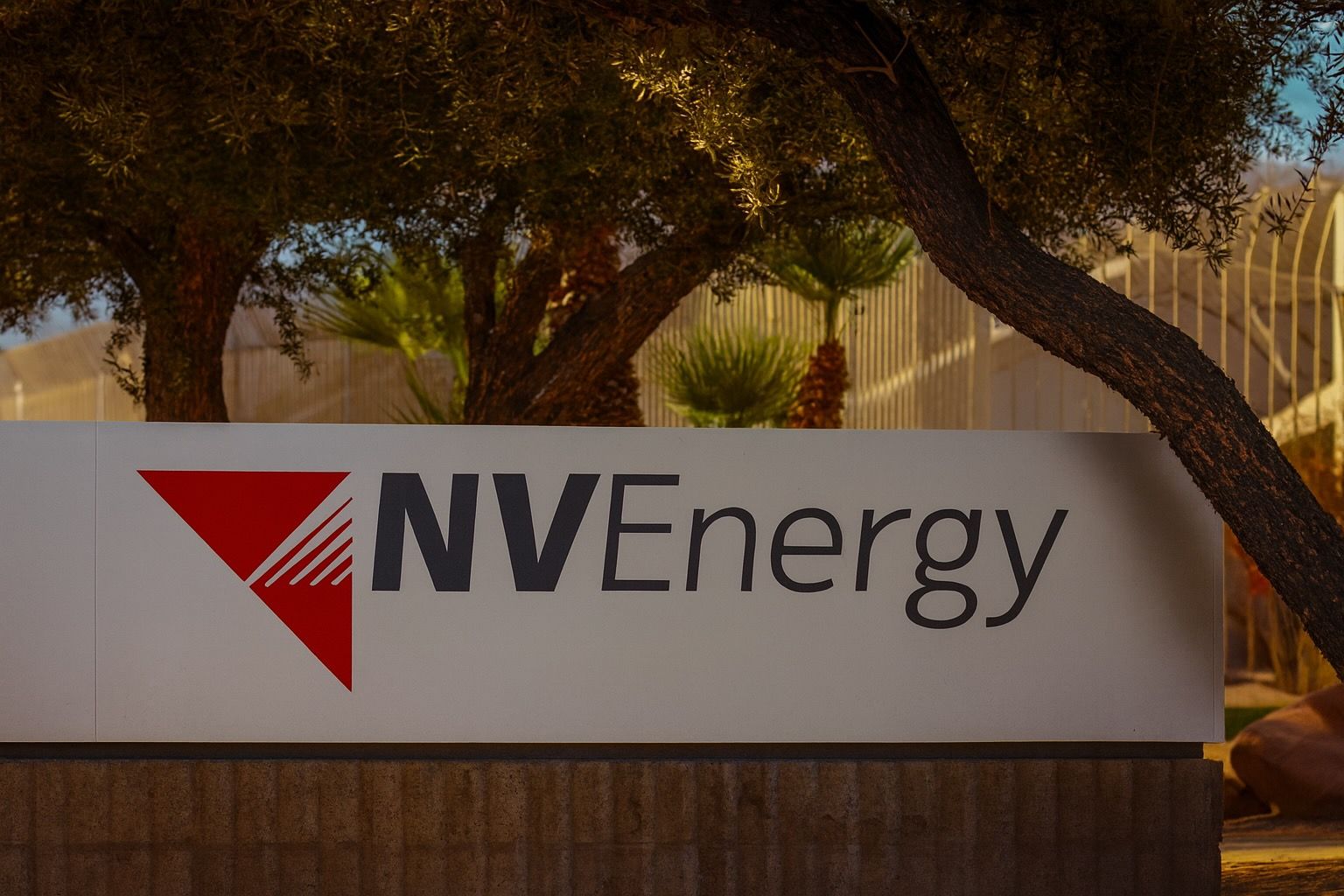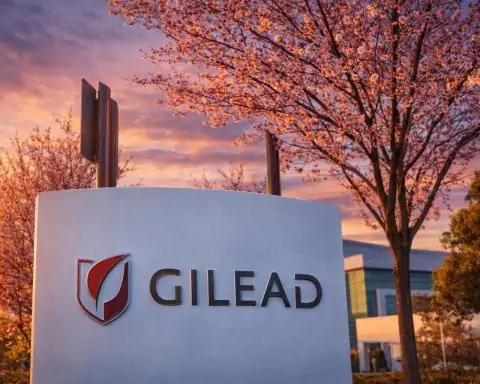- Price & Volume: NV Energy (NYSE: NVE) shares were about $23.74 on Oct. 24, 2025 [1] [2], effectively unchanged over the past few sessions. Trading is extremely thin – average daily volume is only ~1.8 million [3] – and financial sites note NVE is “potentially delisted” and “may not be actively trading” [4].
- Regulatory News: In September 2025, the Nevada Public Utilities Commission (PUC) approved a new NV Energy rate plan that imposes a daily demand charge and tightens solar net-metering rules [5] [6]. Consumer and solar groups warn this change will raise bills for rooftop solar customers, contrary to Nevada’s clean-energy goals [7] [8]. NV Energy says the average solar household will see only a modest increase (≈$12/month) under the new design [9].
- FERC Actions: On Oct. 20, 2025, the Federal Energy Regulatory Commission rejected NV Energy’s request to let renewable developers withdraw from the grid interconnection queue penalty-free [10]. This came after Congress and the Trump administration rolled back clean-energy tax credits – actions that have filled NV Energy’s queue with ~23.1 GW of pending projects (over 9.3 GW solar+storage, 3.3 GW geothermal) [11]. In a related move, FERC also denied NV Energy’s proposal to refund developers’ deposits for solar/wind projects canceled under recent federal policies [12].
- Local Backlash: The new demand-charge structure has sparked public outcry. Dozens of Nevada residents and clean-energy advocates rallied at a PUC hearing, calling the 15-minute peak demand charge unfair (it penalizes normal household activities like cooking or air-conditioning) [13]. Vote Solar’s regional director warned the changes “run counter” to Nevada’s 2017 solar net-metering law and threaten rooftop solar affordability [14].
- Company Profile: NV Energy is the dominant electric (and northern Nevada gas) utility, serving ~1.3 million customers across Nevada (including Las Vegas and Reno) [15]. It is 100% owned by Berkshire Hathaway Energy (a Warren Buffett company) since 2013 [16]. The utility has about $4.5 billion in annual revenues (2025) and earned roughly $2.9 billion net income in 2023 [17]. NV Energy is investing in grid upgrades and clean energy projects – for example, a $4.2 billion Greenlink HVDC transmission line is under construction to bring remote renewables into Nevada [18] – and has launched a $15 million electric-vehicle charging program in Nevada [19].
- Market Context: Unlike pure green-tech stocks, regulated utilities like NV Energy tend to trade steadily. Notably, TS2.tech reports that major renewable-focused utilities (e.g. NextEra Energy) have fallen sharply in 2025 (NextEra was ~15% below its year-ago level) amid federal incentive rollbacks [20]. By contrast, NV Energy’s stock has barely budged. Energy analysts say NV’s stable cash flows give it resilience, even as regulators and policy changes create uncertainty. NV Energy itself emphasizes Nevada’s low rates – CEO Brandon Barkhuff notes Nevada’s average residential price is ~60% below California’s [21] – and argues it remains committed to “keeping costs low” for customers [22].
Stock Performance & Trading
NV Energy’s stock is essentially flat this week, closing at $23.74 per share on Oct. 24, 2025 [23] [24]. The share price is right at its recent range (previous close $23.74, open $23.71, day’s high $23.75 [25]) and no new 52-week high or low is indicated [26]. In fact, the investing.com data shows zero price change (0.00%) on the latest quote [27]. Trading volume is negligible (no fresh trades were reported on Oct. 24), and the 3-month average volume is only about 1.76 million shares per day [28]. MarketBeat explicitly warns that NVE has been “marked as potentially delisted” and may not be actively trading [29]. In practice, this means NV Energy stock behaves more like a very thinly traded utility issue than a busy market ticker.
The lack of movement means there is no clear trend in the stock price. Over longer periods, NVE has been roughly flat. Investing.com notes the 1-year change is 0% [30], indicating the price has held steady around the mid-$20s for months. (For context, the prior 52-week high on record is $23.75 [31], essentially the same as today.) In sum, as of Oct. 24, NV Energy stock is not undergoing any dramatic rally or crash – instead it’s paused amid the ongoing regulatory and policy news in Nevada and Washington.
Regulatory & Policy Developments
Nevada Rate Case: Demand Charge Approved
A major recent development is the Nevada PUC’s approval of NV Energy’s latest rate case on Sept. 16, 2025. Under this order, NV Energy can increase rates and implement a daily demand charge for residential and small business customers starting April 2026 [32]. Under the new structure, each customer’s bill will include a charge based on their highest 15-minute usage block each day – effectively penalizing usage “spikes”. Regulatory documents show the PUC shaved over one-third off NV Energy’s original $224 million request, but still gave the green light to the new demand charge [33]. NV Energy estimates this charge will average about $20 per month on a typical bill [34] (adding up to ~$240 per year) and says it is needed to cover fixed costs and promote efficiency.
Consumer advocates and solar groups strongly oppose the change. They argue that linking bills to short peak periods “punishes families for short bursts of normal activity” – such as cooking dinner or running air conditioning [35]. Many rooftop solar owners worry that the demand charge and the switch to 15-minute net-metering crediting will make solar less cost-effective [36] [37]. Vote Solar’s interior-West director warned approving such charges “run counter to the intent” of Nevada’s 2017 solar net-metering law and threaten solar affordability [38]. The Clark County environment office even testified that switching to 15-minute interval netting “effectively eliminates any true netting of energy” [39]. In short, critics say the order will raise bills for solar customers and slow Nevada’s clean-energy goals.
NV Energy, however, maintains the changes are reasonable. In hearings the company argued most customers will still see lower bills overall, and that Nevada’s energy rates remain quite low. NV Energy President CEO Brandon Barkhuff told regulators that Nevada’s average residential price is about 60% lower than California’s and 22% below the national average [40]. Barkhuff said the daily demand charge “does not increase bills but changes the existing structure,” giving consumers better control over usage [41]. The company also highlighted that the demand charge will only boost an average solar bill by about $12 per month [42]. Thus, NV Energy insists the new rates are needed for fairness and reliability, and pledges to keep costs as low as possible.
Federal Grid Interconnection Decisions
At the federal level, regulatory actions have also touched NV Energy’s future. NV Energy has seen a surge of renewable projects in its queue – it reported 69 projects totaling ~23.1 GW as of mid-Oct 2025 [43], up from 17.6 GW in July. (Notably this includes 3.3 GW of geothermal and 9.3 GW of solar+storage hybrids [44].) Many developers had sought relief from recent policy changes: in late July 2025 NV Energy filed with FERC requesting a one-time window for generators to withdraw without penalty, due to looming cuts in federal tax credits. However, on Oct. 20 FERC denied that waiver [45]. The commission ruled NV Energy hadn’t limited the relief to specific cases, and that creating a broad “safe harbor” refund process exceeded its tariff authority [46]. In practice, this means project owners in the queue still must forfeit their deposits if they pull out, even if federal rules changed. At the same session, FERC also rejected NV Energy’s proposal to repay deposits to solar/wind projects that were effectively canceled by the new federal policy [47]. The utility had argued (with backing from the Solar Energy Industries Association and Interwest Energy Alliance) that its customers needed an “escape hatch” after Congress abruptly phased out IRA tax credits [48]. FERC’s decision forces NV Energy to stick with the original interconnection rules: deposits are forfeited and projects must either proceed under current law or walk away without refund.
Company Role and Projects
NV Energy is a vertically integrated utility: it generates, transmits and distributes power across Nevada. It was formed by the 1999 merger of northern and southern Nevada utilities, and today covers almost the entire state’s population [49]. (In fact, Nevada’s only other major utility is Southern California Edison in one corner of Nevada.) NV Energy also provides natural gas service around Reno. The company serves about 1.3 million electric and gas customers along with Nevada’s tens of millions of annual tourists [50]. Major sources of power include natural gas, hydroelectric plants, coal (from the retired Valmy plant), and growing amounts of geothermal and solar.
Since becoming part of Berkshire Hathaway Energy in 2013 [51], NV Energy has aligned with Nevada’s clean-energy mandates. The state requires high percentages of renewables and has aggressive EV goals. In 2018 NV Energy launched a $15 million electric vehicle charging program (incentives for public charging stations) to accelerate EV adoption [52]. It is also building the Greenlink HVDC project, a 500kV line that will import thousands of megawatts of wind and solar power from Utah and rural Nevada into Las Vegas. The utility says Greenlink’s primary purpose is to improve service and prepare for growth [53]. (In fact, spokeswoman Meghin Delaney noted it will “provide access to renewable energy corridors” that otherwise couldn’t reach the grid [54].)
Despite these green initiatives, NV Energy still faces public scrutiny. The recent billing controversies have fueled accusations that the utility prioritizes profits over customers. For example, a Nevada Conservation League leader protested that the new rate design “feels stacked in favor of a guaranteed profit rather than the public interest” [55]. Regulators note that NV Energy has already cut a third from its proposed rate increase, but opponents say even the pared-down plan unfairly shifts costs to vulnerable households. The company is also addressing a major unrelated issue: in 2025 it acknowledged billing errors that overcharged tens of thousands of customers (misclassifying multi-family homes) and has proposed $32.6 million in refunds. State regulators are still reviewing that plan [56]. These events underscore that NV Energy – as the monopoly utility – is under a microscope on pricing and fairness.
Analyst & Market Perspective
There are few formal “analyst ratings” on NV Energy stock because it is not widely held by the public. (The last known dividend was declared in 2013 [57], and since the BHE acquisition it has not functioned like a typical public utility stock.) However, industry observers do comment on its fundamentals. NV Energy’s credit profile is rated investment-grade (Moody’s A2) and has actually been improving of late [58]. Credit analysts attribute this to stable rate-regulated cash flows, despite some volatility from Nevada’s economy and regulatory challenges [59]. The utility’s balance sheet and earnings are insulated by the Berkshire Hathaway backing, so it usually weathers market swings better than merchant generators.
By contrast, pure-play power and renewables stocks have been more volatile. TS2.tech reports that many clean-energy companies saw steep stock declines in mid-2025 after Congress rescinded production tax credits [60]. For example, NextEra Energy (NEE) – a large Florida-based renewable utility – fell from about $90 to $80 in 2025 [61]. This “boom-bust” effect on renewables is worrying analysts: without subsidies, development pipelines will slow, they say [62]. NV Energy, however, is less exposed because its existing rates and long-term obligations are regulated. As a result, NVE stock has shown near-zero volatility, unlike many peers.
What about growth forecasts? NV Energy’s growth is driven by Nevada’s population and tourism demand (hotel/casino load) – both of which have been rising steadily. The state’s $45+ billion economy expands with new residents and industries (like data centers and blockchain mining). NV Energy is investing in infrastructure (e.g. Greenlink, grid upgrades) to serve that growth. No Wall Street “price targets” exist, but the utility’s earnings have been solid: for instance, a Q4 2024 earnings release (preliminary) showed revenue up to ~$766 million with net income around $85M (78¢ EPS) [63]. (Note: Seeking Alpha aggregate news from Feb. 2025 reported an NVE net income of $182.6M, or $0.78/share, for Q3 2024 [64].) These are healthy results for a regulated utility.
Looking ahead, the main risks to NV Energy’s value are regulatory and political, not market trends. If the PUC’s new rates pass legal muster and the utility recovers its investments, credit analysts expect stable cash flow. A Moody’s commentary (via martini.ai) indicates NV Energy’s credit quality has recently improved, with default risk falling [65]. On the other hand, sustained public backlash could result in further rate rollbacks or legislation. The November 2025 Nevada ballot, for instance, includes measures that could alter utility governance and renewable mandates – changes to watch for.
Energy Sector Comparisons
In a broader context, NV Energy sits between traditional utilities and the clean-energy sector. Its peers include regulated utilities in California and Arizona, like Pacific Gas & Electric (PCG) and Arizona Public Service (APSC), which have also faced contentious rate cases. For example, Arizona’s Attorney General has challenged a recent 14% APS rate hike as too high [66]. Similarly, utilities nationally are raising rates to cover grid hardening against climate impacts. NV Energy’s approved rate increase (despite being trimmed) is in line with this trend.
Compared to unregulated energy companies, NV Energy’s stock is more stable. Oil & gas majors or coal miners have seen big swings: TS2 notes Peabody Energy (coal) ran up on a brief coal resurgence, and commodity prices are volatile. Meanwhile, many green-technology stocks have enjoyed bull runs (e.g. Tesla, battery firms) or sharp corrections. NV Energy’s fate is largely tied to Nevada’s regulatory environment. Its fixed-asset base and monopoly status mean investors don’t expect explosive growth like a tech stock – instead, they expect steady dividends (when paid) and slow, predictable returns.
Key Takeaway: As of Oct. 24, 2025, NV Energy’s stock is stable around $23.7, but the company is navigating significant regulatory shifts. The new rate design and pending PUC and FERC decisions are the real story behind the headlines. Investors and residents will be watching Nevada’s utility landscape closely – the impact on NV Energy’s finances and stock will depend on how these policy battles resolve.
Sources: Authoritative financial and industry outlets, including Investing.com (stock data) [67] [68], Utility Dive [69] [70], NV-focused press (Nevada Current [71], News3LasVegas [72]), and TS2.tech [73]. These cover the latest regulatory rulings, company statements, and stock performance.
References
1. www.investing.com, 2. www.investing.com, 3. www.investing.com, 4. www.marketbeat.com, 5. www.utilitydive.com, 6. www.utilitydive.com, 7. www.utilitydive.com, 8. news3lv.com, 9. news3lv.com, 10. www.utilitydive.com, 11. www.utilitydive.com, 12. nevadacurrent.com, 13. news3lv.com, 14. www.utilitydive.com, 15. en.wikipedia.org, 16. en.wikipedia.org, 17. en.wikipedia.org, 18. nevadacurrent.com, 19. en.wikipedia.org, 20. ts2.tech, 21. www.utilitydive.com, 22. www.utilitydive.com, 23. www.investing.com, 24. www.investing.com, 25. www.investing.com, 26. www.investing.com, 27. www.investing.com, 28. www.investing.com, 29. www.marketbeat.com, 30. www.investing.com, 31. www.investing.com, 32. www.utilitydive.com, 33. www.utilitydive.com, 34. www.utilitydive.com, 35. news3lv.com, 36. www.utilitydive.com, 37. news3lv.com, 38. www.utilitydive.com, 39. www.utilitydive.com, 40. www.utilitydive.com, 41. www.utilitydive.com, 42. news3lv.com, 43. www.utilitydive.com, 44. www.utilitydive.com, 45. www.utilitydive.com, 46. www.utilitydive.com, 47. nevadacurrent.com, 48. nevadacurrent.com, 49. en.wikipedia.org, 50. en.wikipedia.org, 51. en.wikipedia.org, 52. en.wikipedia.org, 53. nevadacurrent.com, 54. nevadacurrent.com, 55. news3lv.com, 56. news3lv.com, 57. www.advfn.com, 58. martini.ai, 59. martini.ai, 60. ts2.tech, 61. ts2.tech, 62. ts2.tech, 63. www.advfn.com, 64. www.advfn.com, 65. martini.ai, 66. www.utilitydive.com, 67. www.investing.com, 68. www.investing.com, 69. www.utilitydive.com, 70. www.utilitydive.com, 71. nevadacurrent.com, 72. news3lv.com, 73. ts2.tech







